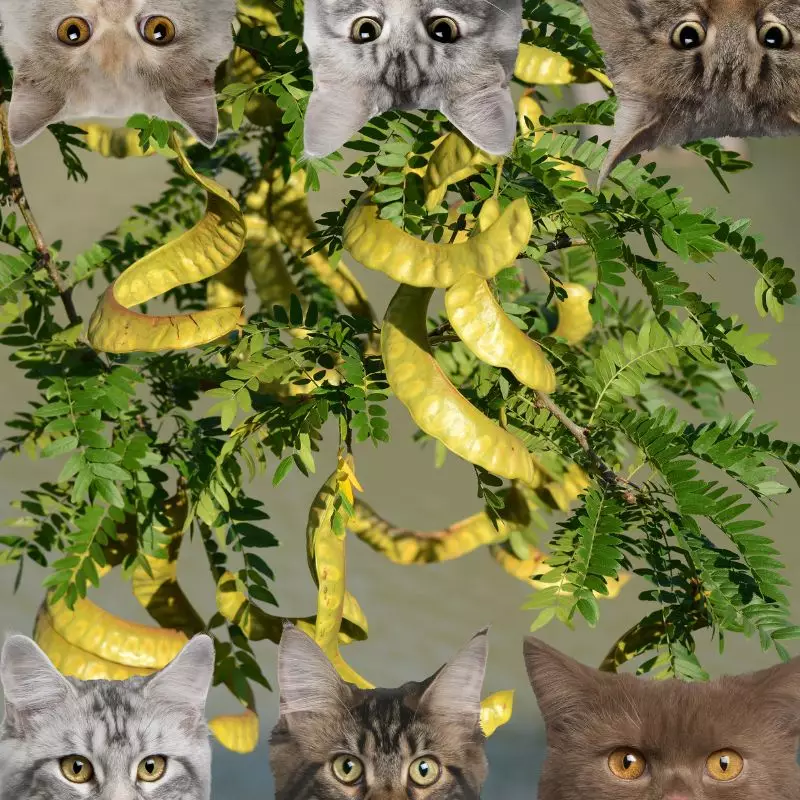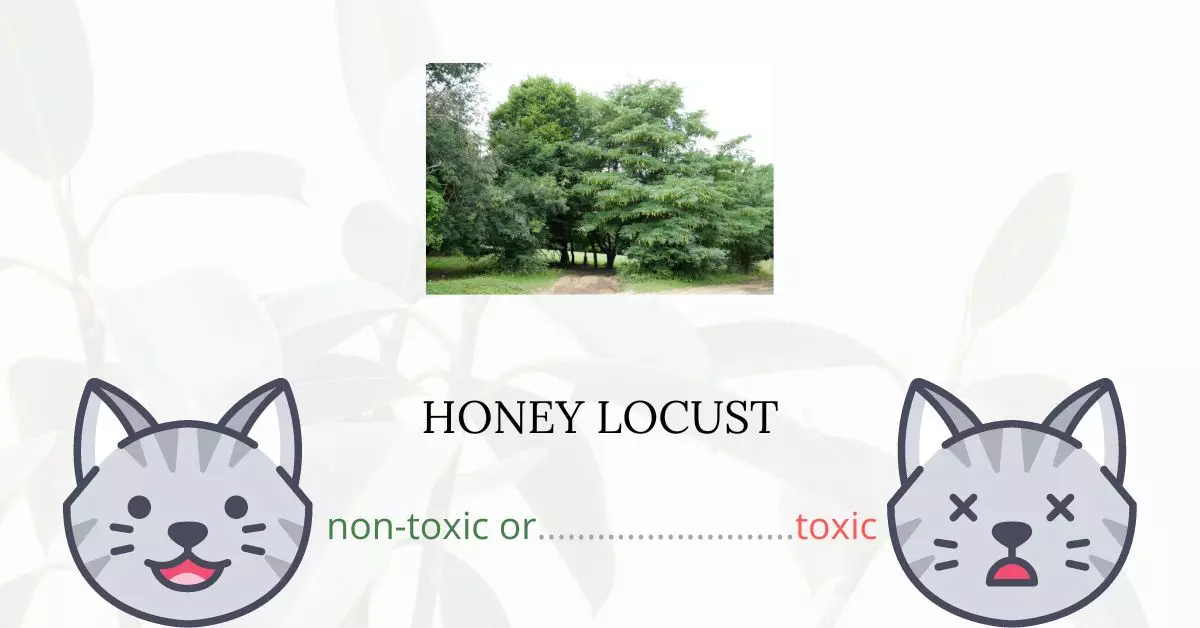Honey Locust is not toxic for cats. It is essential to clarify, however, that while the plant itself is not harmful, the thorns from honey locusts can pose a physical risk, as they are capable of causing painful wounds that may take time to heal.
This article was written in collaboration with a team of experienced DVMs (doctors of veterinary medicine). With their invaluable insights, we are dedicated to providing accurate and up-to-date information on the potential risks associated with various plants, including the Honey Locust, and their effects on cats. Our information is also backed by thorough research from high-authority websites such as ASPCA and PetMD, ensuring that you receive the most reliable knowledge available.
Can Cats Eat Honey Locust?

The pods are commonly consumed by a variety of wild and domesticated animal species including cats, however, this plant can also generate a large number of thorns, which frequently cause painful wounds that take a long time to heal.
Keep in mind that cats can’t digest plant matter properly, therefore the essential nutrients they require can only be provided by meat.
What is Honey Locust?

The honey locust (Gleditsia triacanthos), sometimes referred to as sweet bean, sweet locust, three-thorn acacia, and the thornless honey locust, is a deciduous tree in the family Fabaceae that is indigenous to central North America.
It is most frequently found in the moist soil of river valleys. Honey locust is a highly adaptable species that has been introduced to many different environments, is an aggressive invasive species, and has spread throughout the world.
Gleditsia triacanthos, a type of honey locust, can grow as high as 20 to 30 meters. Although they grow quickly, they only have a median lifespan of about 120 years. Older trees have pinnately compound leaves; young, robust trees have bipinnately compound leaves. In the autumn, they become yellow. The clusters of cream-colored blooms with a potent aroma emerge from the base of the leaf axils in late April.
A flat legume (pod) known as the honey locust’s fruit matures in the early fall and is typically between 15-20 cm in length. The branches of honey locusts frequently sprout thorns that are 3–10 cm long which may be single or branched into several points. The thorns are relatively soft and green when young, harden and turn red as they age, then fade to ash grey and become brittle when they are mature.
Keeping Cats Away From Honey Locust

Keep them away from yards. Try scattering unpleasant items like cayenne pepper flakes or ammonia about the area. Additionally, the perimeter can be covered with these repellents. Sprays made from citrus fruits also appear to be effective.
Again, you can include plants that cats loathe. As an illustration, surround the edge of your yard with rosemary plants. Cats detest it and usually steer clear of the area. There are motion sprinklers that splash the cats when they enter your yard available for people who can buy them.
Plants to Avoid For Your Cats
If you are a cat owner and unsure if the plants growing in your yard are harmful to your cats, check out this list of toxic plants for cats. You can also check our list of non-toxic plants for cats.





